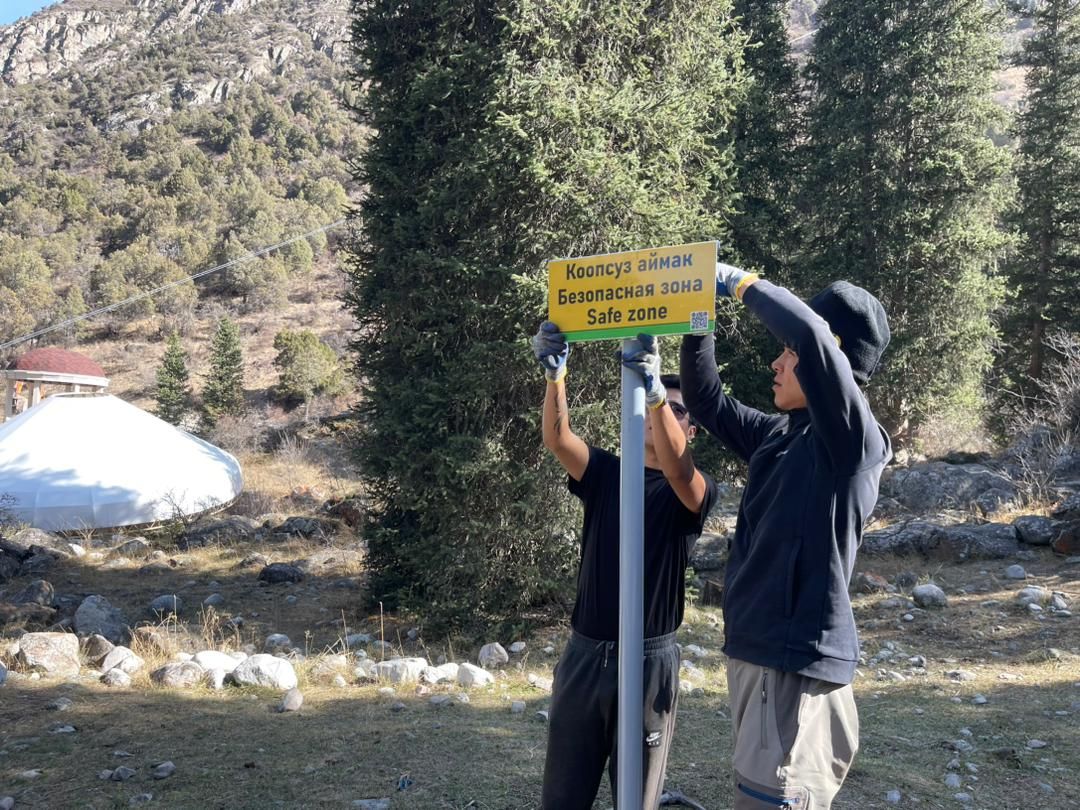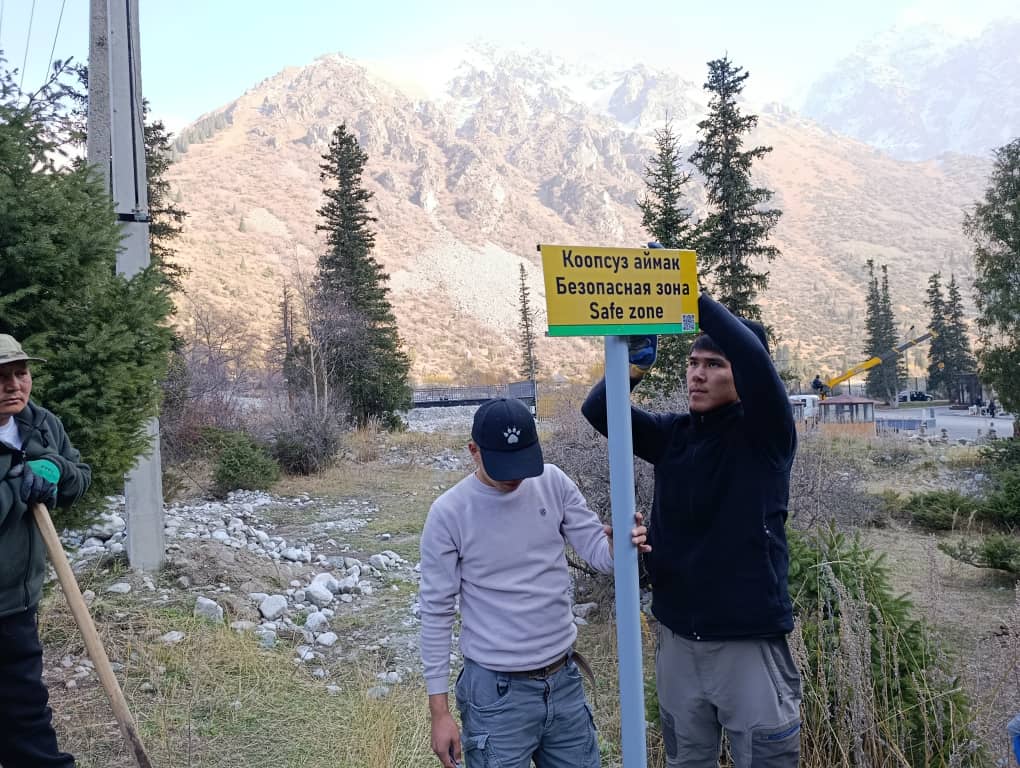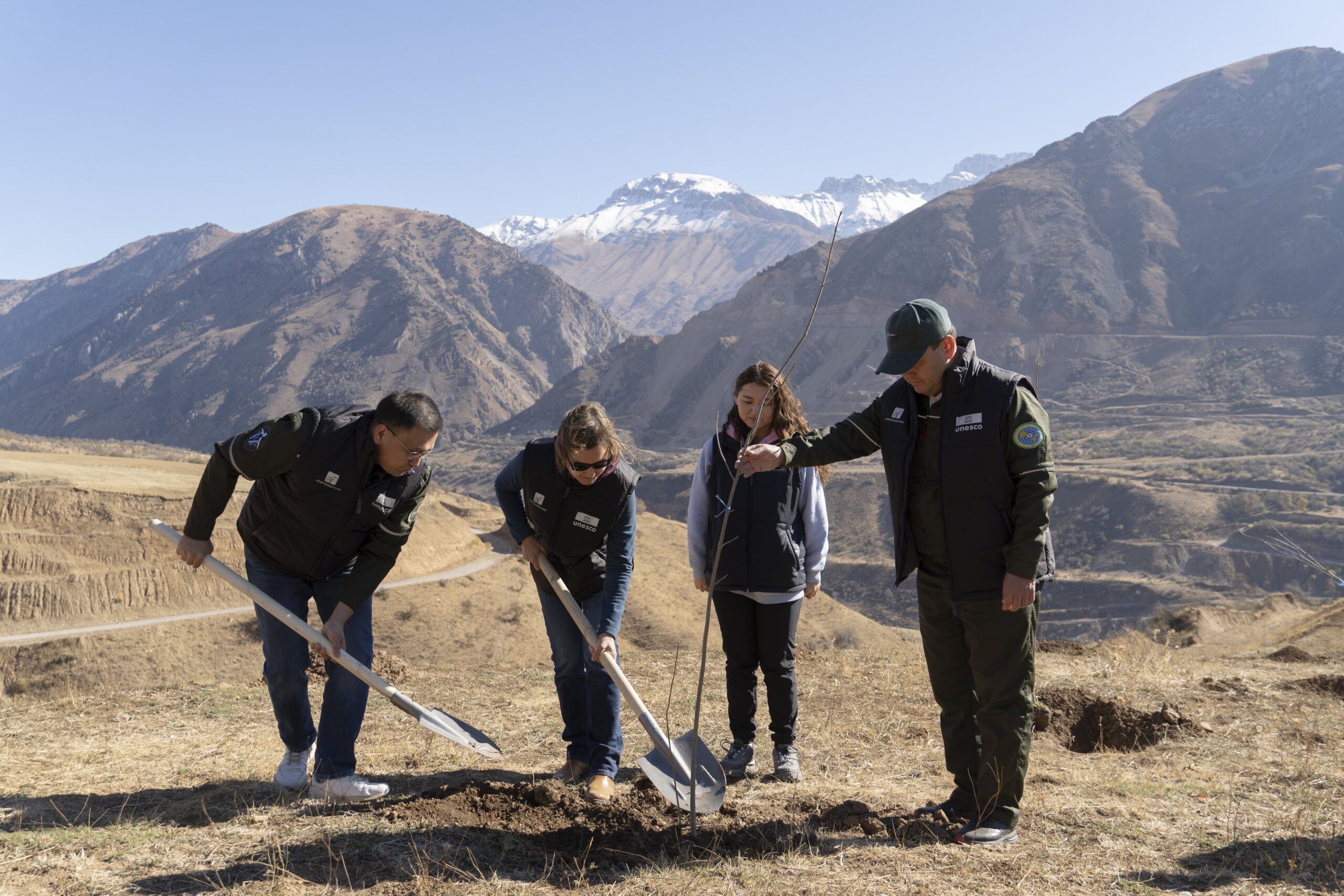Early WarningKyrgyz Republic10 November 2025
New information boards in Ala-Archa National Park: a step towards visitor safety

In one of Kyrgyzstan’s most visited natural areas — Ala-Archa National Park — new information boards have been installed to enhance the safety of tourists and local residents. The initiative was implemented under the UNESCO–Adaptation Fund project “Reducing vulnerabilities of populations in Central Asia from glacier lake outburst floods in a changing climate (GLOFCA)”.
Located near the capital Bishkek and traversed by the Ala-Archa River, the park is one of the country’s most scenic sites, home to rich flora and fauna. It receives around 6,500 visitors daily during the summer (according to 2025 data), and up to 7,000 in autumn. Given such high visitation and the elevated risk of natural hazards — particularly mudflows — the installation of warning signs represents an important step towards improving safety.

The park has previously experienced destructive mudflows: in 2003, a major event destroyed forested areas, and new incidents were recorded in 2015. The affected territory of around 500–600 m² was later rehabilitated.
As part of the GLOFCA project, locations for the boards and designated safe assembly points were identified jointly with park staff. The signs were installed in three key zones — Ak-Sai, Adygene, and the lower Ala-Archa valley. They include warnings in Kyrgyz, Russian, and English, show evacuation routes, and feature QR codes linking to detailed information on natural hazards and safety measures.




The next phase of the GLOFCA project will include the installation of an Early Warning System to provide timely alerts to visitors and park authorities about potential glacier lake outburst floods and mudflows.
Read more

New information boards in Ala-Archa National Park: a step towards visitor safety

Major collapse of the Dehdal Glacier
